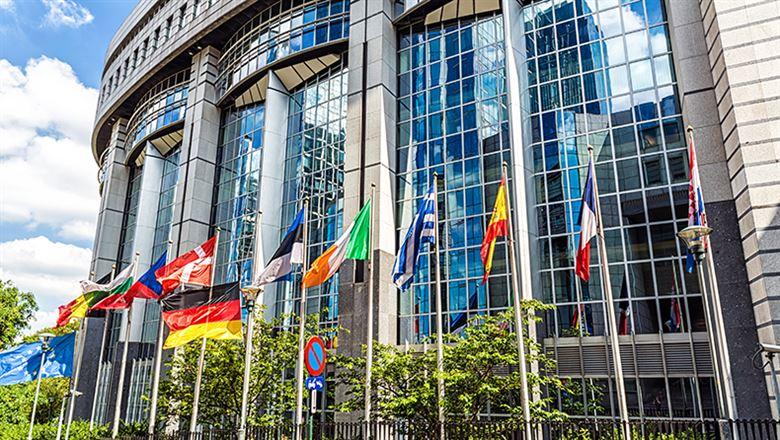Tommy Goodwin, CAE
Tommy Goodwin, CAE, is a federal and international government affairs professional in Washington, DC, and vice chair of the ASAE Government Relations Section Council

If you’re ready to expand your advocacy initiatives beyond the United States, consider these insights from experts who have helped associations take their public policy work around the world.
From Brussels to Beijing, international policymakers and regulators are reshaping the landscape for associations and their members every day. While some associations have long had a global government relations and advocacy footprint, others are exploring how to best advance their missions abroad. If your organization is looking to expand, consider these best practices and lessons learned from experts who have led international advocacy efforts for a wide range of associations.
Lay a strong internal foundation. When considering government relations and advocacy engagement abroad, first establish a strong internal foundation upon which to build your efforts. This includes obtaining support from volunteer and staff leaders, securing long-term resource commitments, determining the appropriate staffing model, and setting up the internal cross-functional team necessary to support efforts on the ground. The team should include stakeholders from government relations, legal, finance, marketing, communications, human resources, and other key internal departments.
“Developing an international advocacy program requires careful investment in both time and resources, the benefits of which might be realized over a longer horizon than traditional domestic advocacy efforts,” says Edward Newburn, former senior vice president of international affairs at AARP.
Prepare for success—and avoid pitfalls. Once that groundwork has been laid, you can begin planning your expansion efforts. This should not be rushed.
The planning stage should encompass a thoughtful and holistic analysis of desired outcomes, identification of countries or regions of focus (including geography-specific policy audits), and alignment with broader advocacy and association-wide goals and objectives.
Additionally, once you have selected targeted locations, pay special attention to legal and ethical considerations, including local lobbying laws and disclosure requirements. This due diligence will help you avoid potentially disastrous legal and ethical situations in new territories.
Assemble the right team. Establishing the right local presence is essential for global advocacy success. This may involve hiring full-time employees abroad or engaging third-party contractors such as public affairs consultancies or association management companies. No matter the staffing model you choose, be sure that your new representatives are good cultural fits—within both the local culture and your association’s own internal culture. While internal fit is often overlooked, it is critical, as the team on the ground will likely be working with association staff and volunteer leaders without the close oversight of headquarters.
Crawl, walk, run. With target markets and local staffing secured, you can begin crafting your initial outreach and engagement strategies, tailoring them to reflect both internal capabilities and external dynamics.
While initial interest in and expectations of the home office will be high, know that global government relations and advocacy initiatives often take years to come to fruition. That’s why short-term and medium-term wins and milestones are important to include alongside longer-term goals and outcomes. These incremental achievements may serve as potential best practices that you can implement at headquarters and beyond.
“Always remain focused on your long-term goals, but also set up bite-size objectives to help build a culture of success along the way,” says Ann Weber, director of government affairs for the Society of Actuaries, which engages with regulators around the world.
Communicate early and often. Keep your internal and external stakeholders informed about key developments. Frequent and open dialogue ensures that the value of global efforts remains front and center, and that it surfaces on-the-ground intelligence, new opportunities, potential challenges, and lessons learned that may be relevant wherever your association operates across the globe.
Moreover, regular communication and information sharing about country- or region-specific developments helps foster the internal intellectual, psychological, and social capital you need to build and sustain a global mindset.
“Being able to integrate different perspectives and show what opportunities are available to the enterprise from a global perspective is critical for success abroad,” notes Şirin Köprücü, a global coach and founder of StrategicStraits, a global market expansion consultancy. “The global mindset truly helps organization leaders identify interdependencies, problem-solve, and build trust with individuals, groups, other organizations, and systems unlike their own.”
Measure what matters along the way. Key performance indicators (KPIs) are vital to measuring progress toward global government relations and advocacy goals and objectives. Associations value what they measure, so rather than focusing on myriad outputs and vanity metrics, agree on a few well-crafted KPIs that you measure relentlessly and communicate often to key internal stakeholders—even when results are unfavorable. This way, you have your finger on the pulse of your global activities and leaders will provide the support that the global division needs.
“Your metrics should always be determined by your overall strategy and by measuring the activities that lead to results for your organization,” says Amy Showalter, government relations consultant and author of From Activity to Achievement: Next Level Metrics That Matter. “While you can measure many different elements of advocacy, focus on measuring what matters.”
Finally, while patience can’t be measured, it’s as important an element as any other. Your international team must stay focused on moving forward: One win quickly becomes two wins, which can then form the foundation for lasting positive engagement.